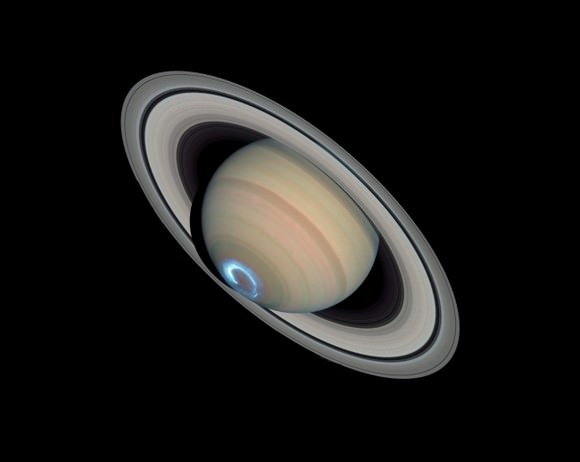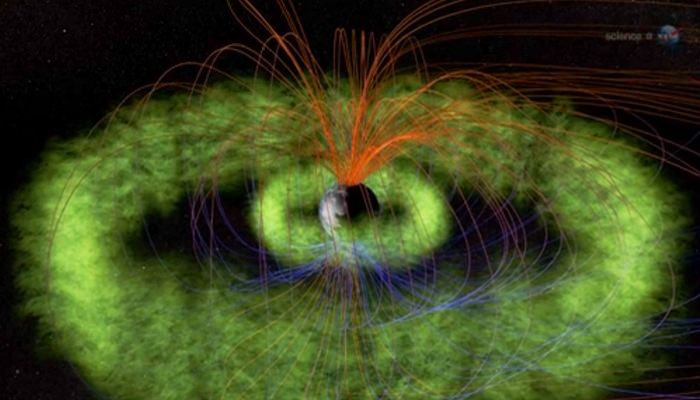He’s not even finished his first university degree yet, but Tim Kennelly is already part of a team that is altering our perception of time on Saturn.
The University of Iowa undergrad — in junior year, yet — led a paper describing activity in Saturn’s magnetosphere, where charged particles collect and sometimes form auroras. The process changes with the Saturnian seasons and could, the university stated, help scientists better understand how long a Saturn day lasts.
The researchers used information from NASA’s Cassini spacecraft, which has been orbiting the planet and its moons since 2004. The research challenge: Saturn is a gas giant full of layers that each have their own rotational speed. That makes it hard to figure out how long Saturn’s day is. (It’s about 10 hours, but varies by latitude.)
Kennelly made direct observations of seasonal changes in a phenomenon known as Saturn kilometric radiation (SKR). This robust radio signal was first discovered several decades ago and is being examined more closely by Cassini.
“UI space physicist Donald Gurnett and other scientists showed that the north and south poles have their own SKR ‘days’ that vary over periods of weeks and years,” the university stated. “How these different periods arise and are driven through the magnetosphere has become a central question of the Cassini mission, according to NASA officials.”
Kennelly observed, from looking at data collected between 2004 and 2011, that SKAs are linked with “flux tubes” that are made up of plasma, or superhot gas. These tubes happen around the same time of instances of SKAs in the northern and southern hemisphere, which changes seasonally.
It’s possible that this understanding could be carried over to other planets, the university stated, including our own.
“This finding may alter how scientists look at the Earth’s magnetosphere and the Van Allen radiation belts that affect a variety of activities at Earth ranging from space flight safety to satellite and cell phone communications,” it added.
This won’t be Kennelly’s only degree. He is about to apply to graduate schools, and he has aims to earn a doctorate in plasma physics.
“I’m pleased to have contributed to our understanding of Saturn’s magnetosphere so early in my career,” stated Kennelly. “I hope this trend continues.”
The research is described in the American Geophysical Union’s Journal of Geophysical Research.
Source: University of Iowa


